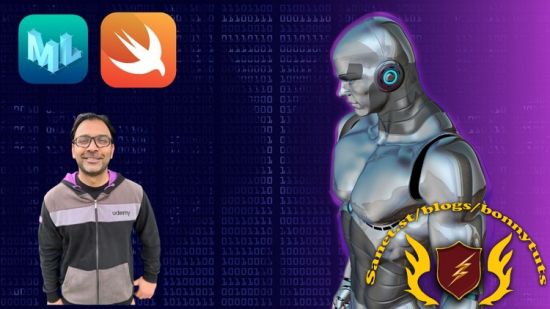
Published 7/2023
Created by Mohammad Azam
MP4 | Video: h264, 1280×720 | Audio: AAC, 44.1 KHz, 2 Ch
Genre: eLearning | Language: English | Duration: 47 Lectures ( 4h 13m ) | Size: 2.4 GB
Covers: Image Classification, Object Detection, Sentiment Analysis, Tabular Data, Xcode Playgrounds Training
What you’ll learn
The fundamentals of Create ML and how to set up their development environment for iOS machine learning projects.
Techniques for image detection, including training models to identify objects and classify images.
The process of sentiment analysis and how to build models that can determine sentiment polarity and perform text classification tasks.
The principles of object detection and how to train models to identify and locate multiple objects within images.
How to work with tabular data and build predictive models using Create ML, enabling accurate predictions and classifications based on structured data.
Requirements
Basic knowledge of iOS app development using Swift.
Familiarity with Xcode, Apple’s integrated development environment (IDE) for iOS app development.
Access to the latest version of Xcode and the Create ML framework.
A strong understanding of programming concepts, including variables, functions, and control flow.
A desire to learn and apply machine learning techniques to iOS app development.
Description
Are you an iOS developer looking to harness the power of machine learning in your app development projects? Look no further! This comprehensive course, “Create ML for iOS Developers – A Beginner’s Guide” is designed to equip you with the knowledge and skills necessary to integrate cutting-edge machine learning models into your iOS applications using Create ML.In this hands-on course, you will embark on a journey from beginner to proficient iOS machine learning developer. We will start by introducing you to the fundamentals of Create ML, Apple’s framework for training machine learning models on-device. You will learn how to set up your development environment, understand the key concepts of machine learning, and get familiar with the Create ML workflow.As we dive deeper, you will explore the exciting world of image detection. You’ll discover how to train models that can identify objects and even classify images with remarkable accuracy. Through practical exercises and real-world examples, you’ll learn how to preprocess images, train models using Create ML’s intuitive interface, and seamlessly integrate them into your iOS applications.Next, we’ll turn our attention to sentiment analysis, a powerful technique for understanding and classifying text data. You’ll learn how to train models that can determine sentiment polarity, analyze customer reviews, and perform text classification tasks. Armed with this knowledge, you’ll be able to build engaging and intelligent iOS apps that can interpret and respond to textual data.But that’s not all! We’ll also delve into the fascinating field of object detection, where you’ll discover how to train models that can identify and locate multiple objects within images. You’ll understand the underlying concepts, explore different architectures, and learn how to optimize your models for real-time performance on iOS devices.Lastly, we’ll explore the world of tabular data and learn how to leverage Create ML to build predictive models. You’ll understand how to preprocess tabular data, handle missing values, and train models that can make accurate predictions and classifications based on structured data.By the end of this course, you will have gained the skills and confidence to implement image detection, sentiment analysis, object detection, and tabular data analysis using Create ML in your iOS projects. Whether you’re a beginner or an experienced iOS developer, this course will provide you with a solid foundation in machine learning and enable you to create powerful and intelligent applications that will delight your users.Enroll now and unlock the potential of Create ML in your iOS development journey!
Password/解压密码www.tbtos.com
转载请注明:0daytown » Create ML for iOS Developers – A Beginner’s Guide